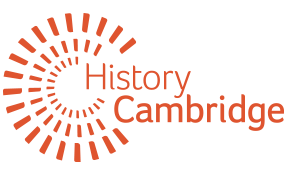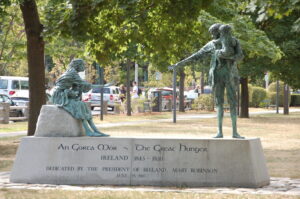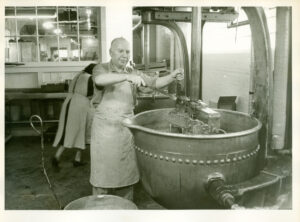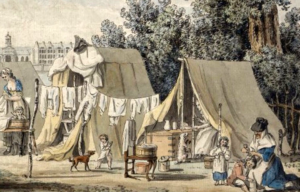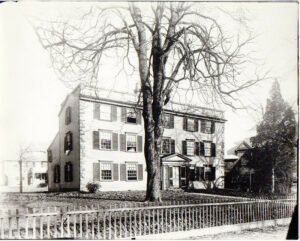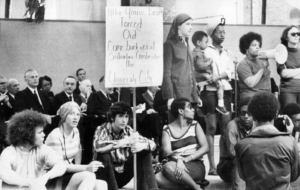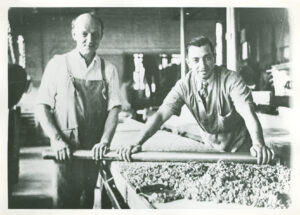History Services
Does your organization need history help? Here is some of what History Cambridge has to offer!
Group Tours
History Cambridge offers guided tours on various Cambridge history topics. These tours run between 1.5-2 hours and are accessible to students in middle school and above. Additionally, they can be tailored to your group based on age and curriculum context. Pricing is available upon request.
Cambridge Monuments and Memorials
Cambridge is a city filled with monuments. Statues, plaques, and memorials across the city commemorate people and events from the past four centuries, but they only represent selected aspects of its history. At first, these monuments may seem pretty straightforward, but a closer examination uncovers much about the ways in which we as a society choose to memorialize specific moments in our past, and who and what has been left out. In this tour, we will look at some of our city’s many monuments, and explore what they can tell us about the people and society that created them.
Enslavement and the History of Brattle Street
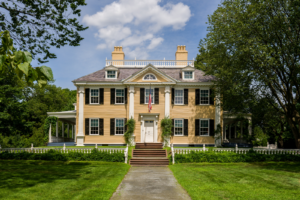
Cambridge and slavery are not often paired in the public imagination. Most think of the enslavement of people of African descent as a Southern phenomenon from which the North, particularly New England, was exempt. But slavery was a very real, ever-present institution in the North, including in Cambridge. There were seven wealthy Loyalist mansions along the “Road to Watertown,” now Brattle Street, which gave this road the nickname “Tory Road.” Most of their wealth was reliant on the slave trade – particularly sugar and rum – and most of them had enslaved servants. In this tour, we will examine the connections between the profits of enslavement and the rise to prominence of the wealthy white families of Brattle Street, and we will discuss the experiences of the enslaved men, women, and children who lived and worked on this land.
Food History of Central Square
During the past century, food has played an important role as a means by which Cambridge visitors and residents could learn about and connect with their neighbors across racial, ethnic, and class lines. This tour of Central Square highlights locations and moments in Cambridge history in which the sharing of a diverse array of ethnic cuisines helped to raise awareness and understanding of the area’s rich cultural mosaic. As waves of immigrants arrived from all corners of the globe, Cambridge as a whole – and Central Square in particular – expanded its culinary horizons to include the cuisines of these new Cantabrigians who had come to work, study, and live in an increasingly diverse city. As restaurateurs diversified to meet the demand for a broader array of foods, native-born Cambridge residents also expanded their palates, learning about both the cuisine and the culture of their immigrant neighbors.
Activism in Cambridge

Central Square has been characterized for much of its history as a working-class neighborhood. In the 1960s, the demographics around Central Square began to change subtly. The growth of local universities led to greater numbers of students in search of housing in the neighborhoods between M.I.T. and Harvard University. At the same time, as blue-collar jobs declined, working-class families began to leave Central Square. With many students involved in the developing social movements of the mid-to-late 1960s, the changing communities surrounding Central Square merged the goals and visions of these movements with other more local matters. Although each cause traced its origins to specific moments and contexts, the activities and ideals of these movements continued into later decades through increased concern with women’s liberation, housing, and civil rights. The causes promulgated by activists over the last sixty years in and around Central Square demonstrate an active pursuit by Cambridge residents for continual change.
Cambridge and Candy
The area’s confectionery past begins in 1765 when an Irish immigrant named John Hannon established America’s first chocolate mill on the banks of the Neponset River in Dorchester. The proximity of the chocolate mill, plus nearby sugar refineries and a large city population made the area ideal for the new industry. Successful confectioners soon outgrew their Boston factories and decided to expand production in Cambridge, where more land could be bought for less money. For the next 100 years, Cambridge was a major industrial center, and candy-making was one of its largest industries. At its peak in 1946, there were sixty-six candy manufacturing companies listed in the city’s directory. This tour will touch upon what’s left of Cambridge’s candy legacy, and will also mention other sweets, like cookies and ice cream, which also have histories here.
The American Revolution in Cambridge

Although there was never a declared Revolutionary battle fought on Cambridge soil, Cantabridgians witnessed more than their fair share of the war’s events. The town endured two military occupations, first by their own countrymen in the Continental Army, and later by their enemies, British General John Burgoyne and the Convention Troops. The town of Cambridge opposed early British parliamentary legislation and raised a militia. When it became clear a compromise could not be reached with Britain, and the pen was traded in for the sword, Cambridge generously contributed to the war effort. Cambridge citizens fought retreating Red Coats following the Battle of Lexington and Concord and later flocked to volunteer for the Revolutionary Cause. This tour sheds light on the Revolutionary events that occurred in Cambridge and includes highlights of famous names and places that may be familiar to audiences as well as stories of the ordinary Cantabrigians whose labor made the Revolution possible and whose experiences are not as well-known.
The Port and Cambridge’s Caribbean Community
For more than a century, The Port neighborhood has been home to a thriving and diverse community of immigrants from the Caribbean. Many of the Loyalists who lived along West Cambridge’s Brattle Street made their fortunes from family-ownedplantations in the Caribbean, all of which were worked by enslaved people ofAfrican descent. The well-established trade routes between the Caribbean, New York, Boston, and Nova Scotia later became migratory routes, especially when sugar prices plummeted, causing the Caribbean economy to collapse. Limited upward mobility, fewer chances for a good education, and plummeting sugar prices drove many Caribbean people to choose immigration as an option. This tour explores the places of worship, places of education, places of outreach and community engagement, and places of work that these new arrivals created to build community in The Port.
Historical Consulting
We engage with a wide variety of community organizations, schools, and other groups to provide consulting services for classes, projects, and programs. We have worked with groups of students at the Tobin School to give historical context to their study of the neighborhood around Squirrel Brand Park, met with teens and staff at the Cambridge Community Art Center to advise them on research and oral history methods, provided historical background to a theater project on immigrants workers’ experiences at The Foundry, and helped teachers at the Cambridge Rindge and Latin Summer Institute to guide students through the process of creating tours of their own neighborhoods.
Need someone to offer historical background to your project? Get in touch!
“History Kit” for hands-on learning
Our History Kits are traveling collections of documents, maps, and artifacts from the History Cambridge collection, designed for hands-on exploration and learning. Each kit features a variety of items from across the city (Cambridge-wide History Kit) or from a particular area (Neighborhood History Kit) that help us share the stories of Cambridge with residents at community locations, block parties, and other events. We also have activities for kids of all ages, including ones that help us collect and preserve the stories of current residents in our archive.
Are you interested in having us bring a History Kit to your event? Get in touch!
Research Guidance
We have a small but significant collection of records and objects, but our mission is to be a clearinghouse for the vast number of libraries, archives, and historical resources that reside in the city. We offer advice and referrals to specific resources, whether in our own holdings or at other institutions in and around Cambridge and will use our research expertise to guide you to the sources you need. If you pose a question that stumps us, we will share it with our History Hive, a community of local residents whose personal Cambridge experiences and knowledge help us to solve local historical mysteries!
Please note that while we are happy to direct you to historical resources, we have small staff and cannot undertake intensive history research for you.
